Most big ticket items on the travel bucket list come with a guarantee. If you want to see the pyramids, they’re waiting for you. Romantic week in Venice? The city hasn’t sunk yet. But when it comes to those elusive northern lights, it’s all about timing—and luck—when planning a longtime dream winter vacation into the upper expanse of Norway.
Thankfully there’s far more than a spectacular (and unpredictable) high-latitude natural light display hiding up here. A true winter wonderland, Northern Norway offers enough stellar experiences between late November and early March to eclipse the sunniest beach day in memory. There’s spectacular cross-country skiing, dogsledding, and reindeer sleighing opportunities here. The top of the list, of course, is a glimpse of those northern lights.
The best chances of witnessing that otherworldly aurora borealis glow is during the cold, dark winter months—if they show up. Like those whale watching captains always say, there are never any guarantees with nature. Alas, during our own seven incredible days in Northern Norway, we never saw the northern lights. Every place we went, they would tell us that the lights had appeared every day prior to our arrival. Then the clouds inconveniently rolled in, blocked the sky, and lowered all of that geomagnetic activity—along with our viewing odds.
All northern lights washouts aside, we still returned home from one of the most incredible vacations. Northern Norway in the winter is a bucket list all its own, with or without that green-glowy cherry on top. If you’re planning a winter escape to this enchanting place, here’s what else to know before you go.
When to Visit
Up here above the Arctic Circle, you won’t experience any sunrise between late November and mid-January—though you’ll have some gray daylight from late morning until early afternoon. Of course, that’s half the point of coming at this time. But if you’re eager for some midnight sun, visit Northern Norway in June instead. For maximum powder, late November through March is your optimal visit period. Aim for anywhere between late October through late March to maximize northern lights viewing chances.
What to Do
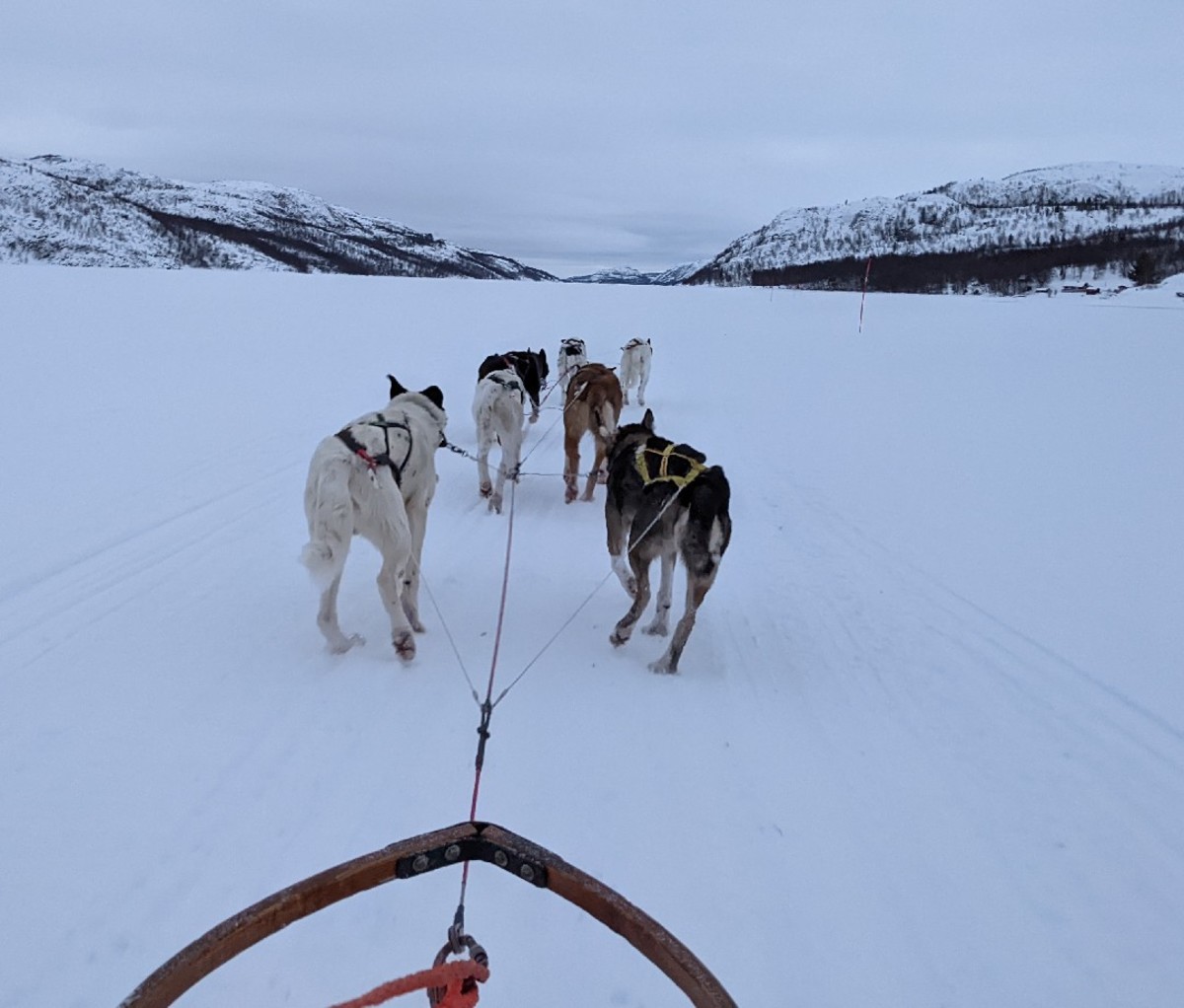
Dogsledding
As if sledding across frozen fjords isn’t awesome enough, you also get to hang out with one of the coolest dog breeds—the Alaskan husky. It’ll look like they’re all different breeds, but that’s because huskies can manifest in a hundred different ways. You’ll probably be the passenger as a professional commands the dogs, but you may also get a chance to stand watch and control the brakes.
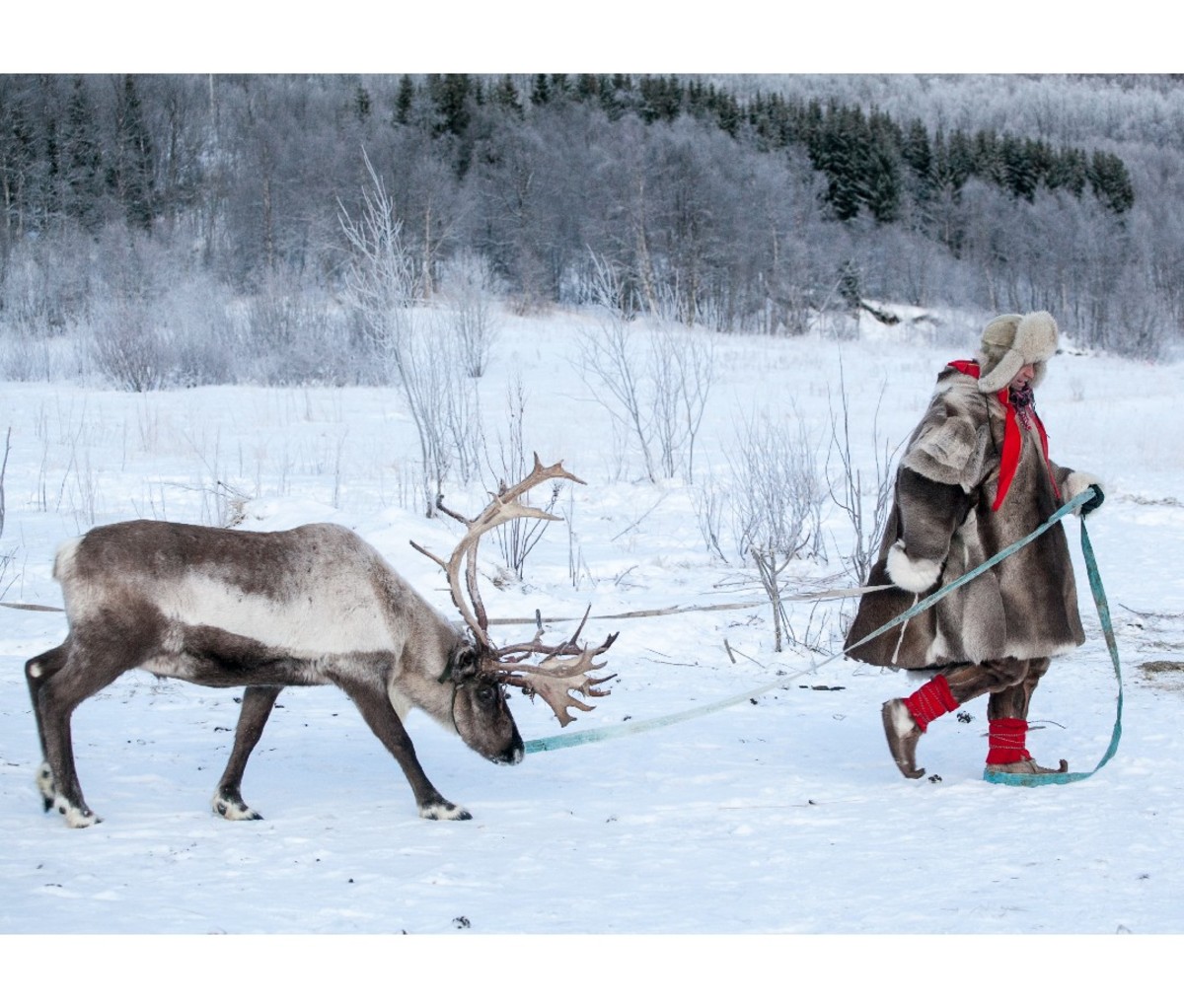
Reindeer Sledding
Another gentle creature—albeit far less social than Alaskan huskies—reindeer are impossible to avoid in these parts, largely because they’re practically a food group all their own. Thankfully, that’s not the only interaction you’ll have with them. It’s easy to book an experience visiting and feeding these beautiful, antlered animals up close. When snow conditions allow, you can even take that mythical reindeer sleigh ride.
Sami Cultural Experiences
The Sami are a nomadic indigenous people spanning across upper Scandinavia and into Russia. With roots that go back thousands of years, over half of today’s Sami population (about 100,000 in all) reside in Norway. Like many native cultures, they’ve experienced prejudice and displacement, but their culture, rituals, and values (including being legendary reindeer trackers and herders) remain strong. You can spend a fascinating day learning about the Sami culture, often in tandem with those reindeer interactions listed above.

King Crab Fishing
Before savoring the freshest king crab of your life, you can trek out to Norway’s famous frozen fjords to witness your dinner being caught and learn about their history and habitat. Among other factoids, you’ll hear how these crabs have no natural predators (aside from us) and that one mother can lay five million eggs and expect as many as one percent of them (hey, that’s still 50,000 baby crabs) to hatch.
Cross-Country Skiing
There’s a reason the Norwegian cross-country skiers conquer the Olympics every four years. While the best routes for enthusiasts of the sport lie in the southern belly of Norway (closer to capital city of Oslo), you can still find ideal recreational trails and conditions up north.
Alpine Skiing
Most of Norway’s popular ski slopes are in the southern half of the country. For Northern Norwegian downhill ski spots, look to Narvikfjellet first and foremost, though Tromsø’s alpine options keep locals plenty entertained too.
Northern Lights Peeping
Whether you end up spying them or not, this is northern lights country—and winter is prime viewing time. Many providers offer to ship you outside of town in the wee hours of the night, or whenever the aurora-peeping conditions are best that day or week. It could at any time up here in the winter, including the middle of the afternoon.
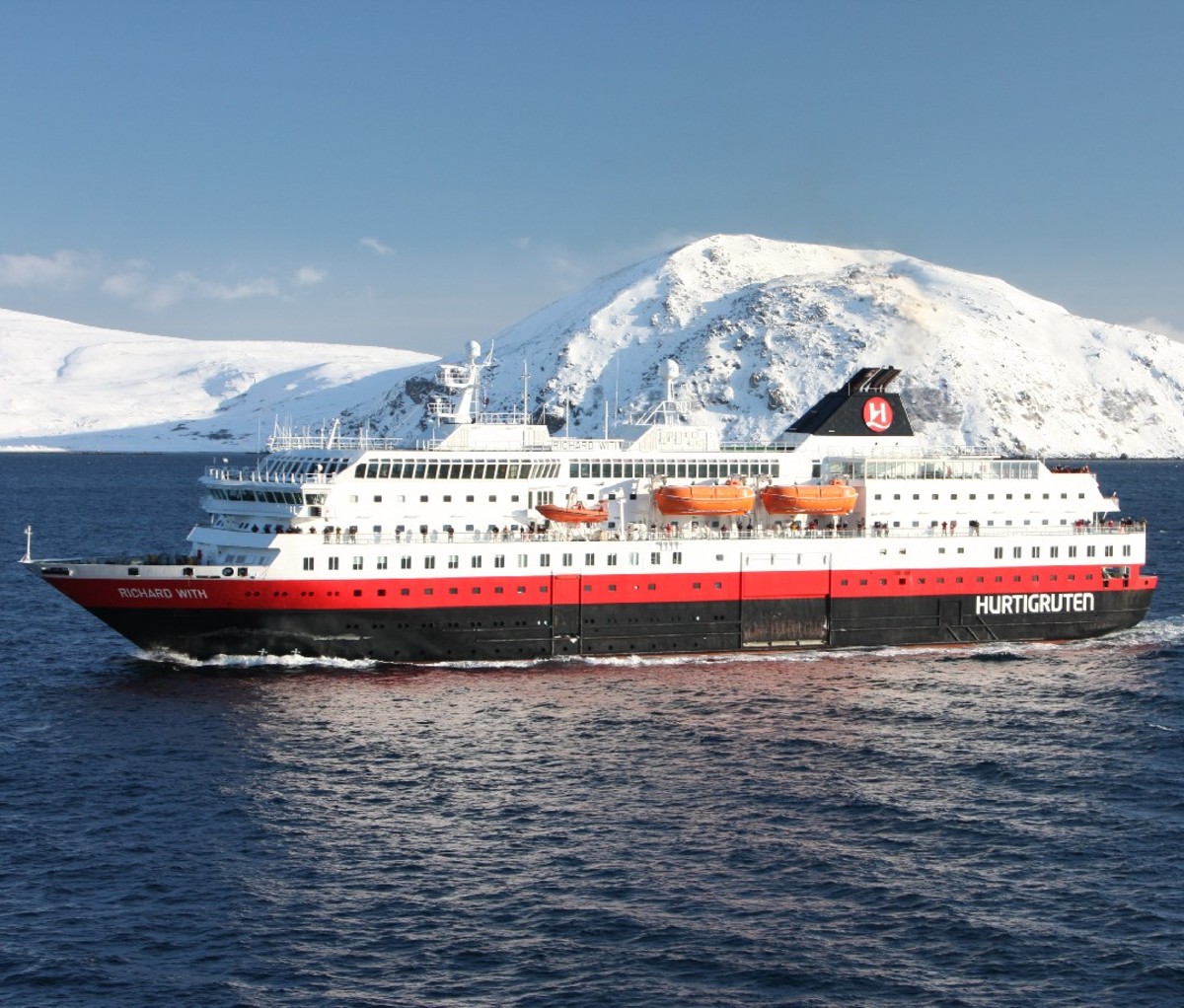
Arctic Cruising
As far as offshore cruising goes, it’s all Hurtigruten’s game here. The Norwegian-based company offers expeditions worldwide, from Antarctica and Peru to Alaska and Cape Verde. Their native Norwegian Coastal Express is the feather in the company’s 125-year cap. Check out their expansive Norway itinerary to pick ports to hop on and off from either over the course of a day or during a multi-day, round-trip excursion. Leading you far from the cities, a cruise also ups your chances of seeing the northern lights along with the country’s famous fjords and perhaps a whale or two.
If you’re leery about taking a cruise during Covid, Hurtigruten’s stringent protocol includes required negative Covid testing from all passengers, rapid tests onboard for each arrival, and enforced mask policies in public areas. This gave us peace of mind during our own two-day cruise from Kirkenes to Tromsø. En route, you’ll enjoy world-class meals, on-deck jacuzzis, and daily jaunts into the various towns, with access to a variety of land-based activities—from a visit to the famous Snowhotel in Kirkenes to dogsledding.
Where to Go and How to Get There
A good way to begin planning your Northern Norway escape is to focus on a port city or two (or three) to launch your adventures from. Most of them connect through Oslo, giving you a chance to explore the country’s beautiful capital too. Our own top three picks discussed in greater detail below were Tromsø, Alta, and Kirkenes.
Norwegian flies numerous US routes to Oslo, and you can either book inter-Norwegian flights through the same airline or via Scandinavian Airlines (SAS) to other points of the country. There are several daily flights from Oslo to Tromsø, which is steadily building its own larger international (EU) route network. Another option is to fly into Bergen or Trondheim and ride Hurtigruten’s Coastal Express cruise north to Tromsø. Then head across the Barents Sea towards Kirkenes, or vice versa.
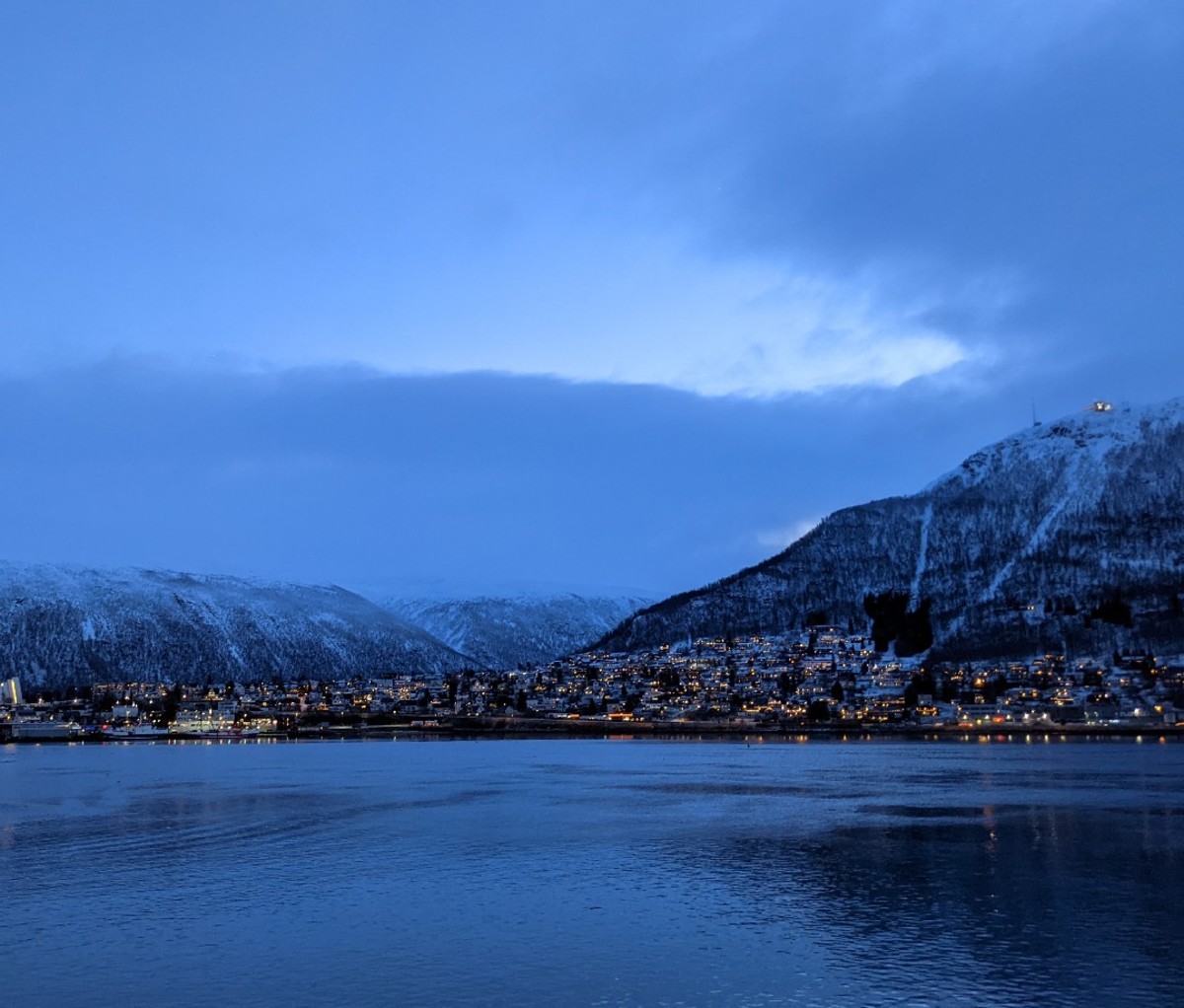
Tromsø
This northwestern island gem is nicknamed “Paris of the North” for its cosmopolitan vibe and fur-ocious fashions that wowed visitors back in the day. Tromsø municipality has close to 90,000 residents and is the most easily accessible stop along northwestern Norway’s serrated coast. Most-do’s here include experiencing Sami culture, reindeer sledding, and northern lights trekking with Lapland Tromsø—which can also arrange for an overnight in a Sami lavvo tent. Active Tromsø is the pick for hands-on dogsledding. In town, get an up-close peek at the iconic Arctic Cathedral, with its mountain-range shape. For local fare, try the cozy, small-menu Bardus Bistro.
As for accommodations, it’s an easy pick: The harbor-adjacent Clarion Hotel The Edge is central to all the action and a convenient 15-minute taxi or bus shuttle to the airport—or three-minute trek to the Hurtigruten cruise dock. Be sure to visit the hotel’s bustling SkyBar and enjoy their expansive breakfast buffet. Book a walking tour with Northern Norway Travel to incorporate local history into your stay. Drop by the Polar Museum to learn about the area’s trapping and trading past. Many other local activities can be booked through Visit Tromsø.
Alta
Alta is the start and end point of Europe’s largest dogsledding race, the Finnmarksløpet, which is second only to Alaska’s Iditarod. The charming town (nicknamed The Northern Lights City) houses the world’s first northern lights observatory. The Alta Museum showcases over 6,000 UNESCO-protected rock paintings and carvings. Sorrisnova sets the standard for hospitality here, with the world’s northernmost ice hotel and the jaw-dropping, 24-room Arctic WIlderness Lodge. Book your dog sledding or Sami experience with them, both of which showcase the sprawl of Northern Norway’s largest plateau. GLØD, offers fat biking tours, cross country skiing, hiking, snowshoeing, ski expeditions, and northern lights trekking, among other activities,
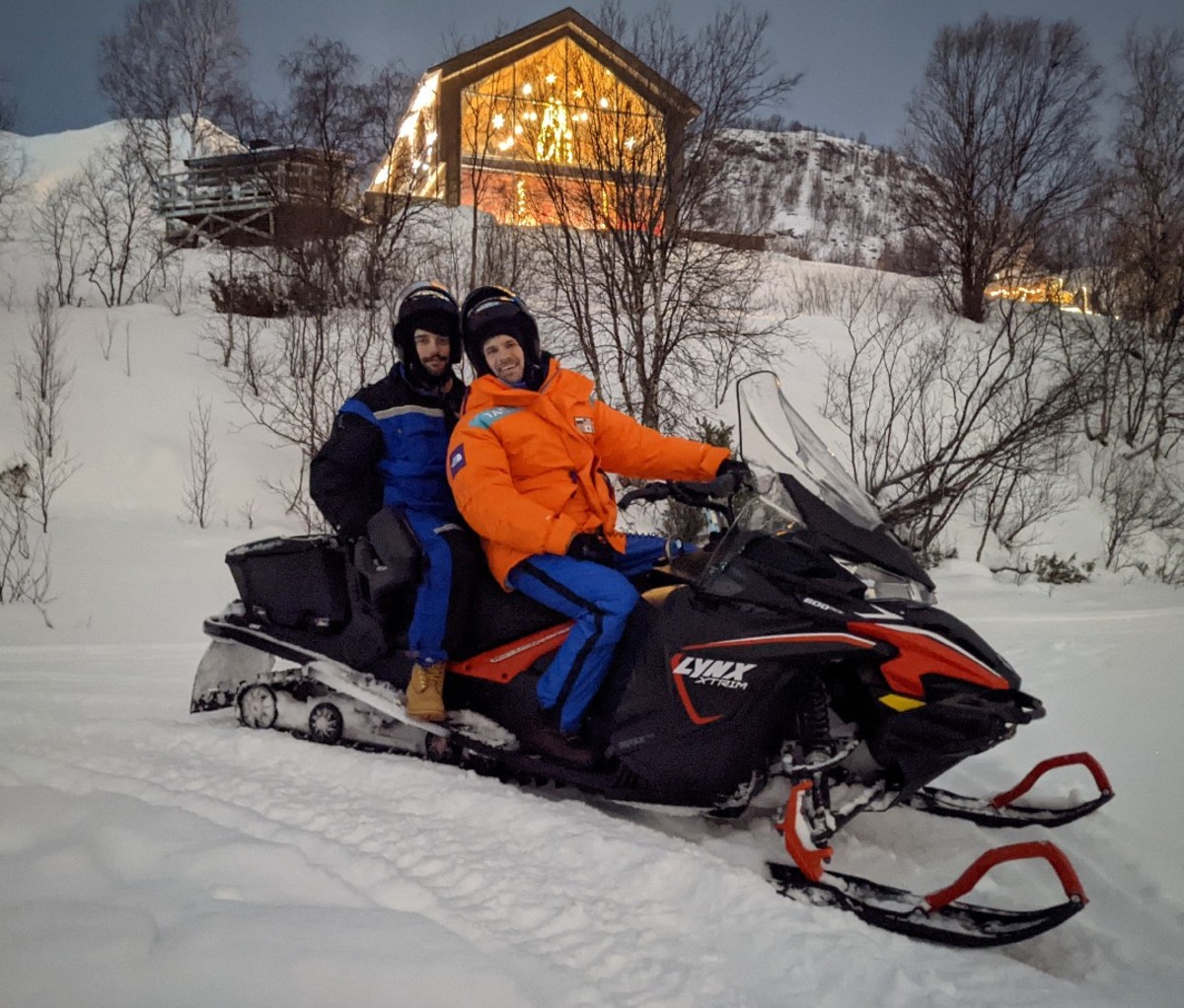
Kirkenes
Kirkenes is a stone’s throw from both Russia and Finland, but the remote northeast harbor town remains one of the country’s most popular winter escapes. The Snowhotel Kirkenes is the ultimate destination. Known as the perennial ice hotel here—complete with Instagrammable carvings—the property’s cozy Gamme Cabins offer prime front row seats to any chance northern lights skyshow.
Virtually every worthy activity in Kirkenes can be booked at the Snowhotel shuttle—from dogsledding, snowmobiling, ice fishing, snowshoeing, cross country skiing, and king crab trekking on the frozen fjords. The hotel also partners with Hurtigruten, should you plan an Arctic cruise westward to Tromsø or even south to Bergen afterwards.
What to Wear in Northern Norway in Winter
Visitors to Northern Norway in the cold, dark snowy winter—when average temperatures generally float between 6 and 30 degrees Fahrenheit—will want to dress accordingly, and account for long periods of time spent outdoors.
The Jacket
While many outfitters will lend you waterproof boots or full-body snowsuits as part of their service, you’ll need a densely insulated outer jacket that breathes and repels moisture. I wore an orange version of this Trans-Antarctica Expedition Parka from North Face, which is surprisingly lightweight and packable given its heft and 700-fill warming powers designed for Arctic and Antarctic expeditions. My partner happily wore a black 800-fill Alaskan Hardgear Drop Point Jacket.
The Layers
Beneath all that, the key is base layers. You can get all of these at Uniqlo, starting with thermal (double density) long johns and tops. Their HEATTECH line lets you wear your normal everyday pants or flannels over these underlayers.
The Footwear
A pair of sturdy, grippable, waterproof boots is essential. I brought my decade-old pair of insulated Red Wing boots and my partner wore these padded-collar, insulated Timberland boots. Pack a bunch of thick, mid-calf socks, too—ideally wool, though these boots will still keep you warm if you wear cotton.
The Gloves
Pick gloves that insulate and protect your hands but that won’t restrict your grip, should you need it for skiing, sledding, or even grabbing your camera quickly. My top pick is Uniqlo’s HEATTECH gloves, which offered both warmth and dexterity.
To learn more about Northern Norway, visit NordNorge.com.
from Men's Journal https://ift.tt/3rMBxRy








0 comments